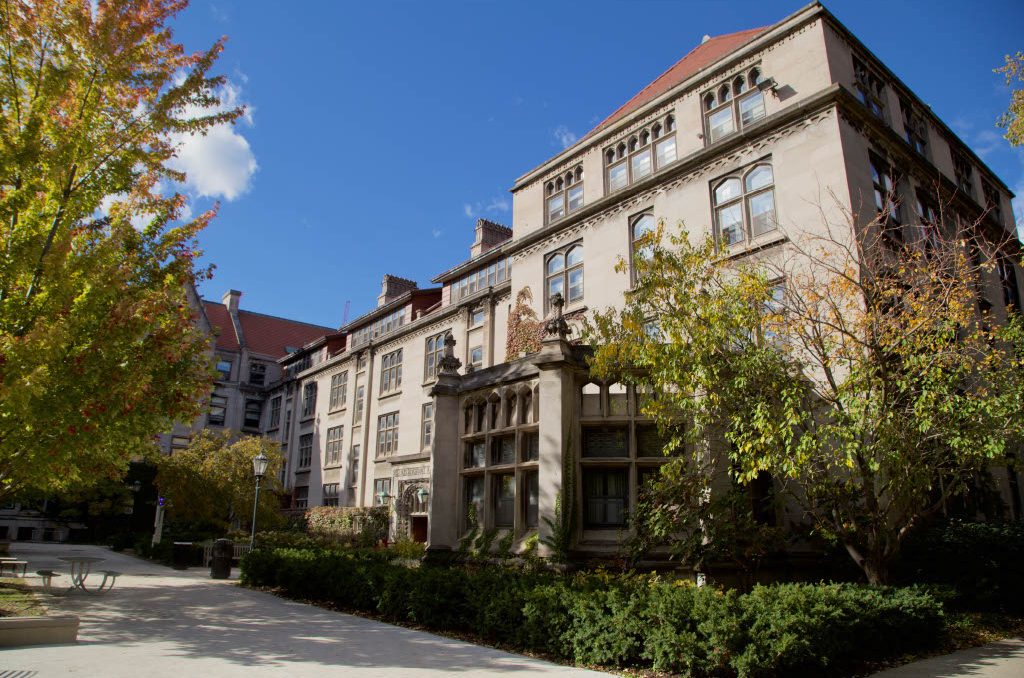When University administrators instituted an Open Housing policy this quarter, many were surprised. The Chicago Tribune dubbed the coed dorm rooms a “bold experiment in chemistry”; members of my own family echoed Vice President for Campus Life and Dean of Students Kim Goff-Crews in their worry that pregnancy rates would jump. Others countered that the Inter-House Council–led initiative marked “a step forward,” particularly for transgender, queer, questioning, and allied students (“Gender-Neutral Housing Approved for 2009 Quarter After Two Years of Debate,” 11/18/08). Both sides, however, got it wrong. Today a bolder, and more necessary, housing policy would instead be the reintroduction of entirely single-sex houses.
In fact, the move to Open Housing merely represents another part of an experiment that the University undertook years ago when it replaced its primarily single-sex housing system with coed houses. Since we’ve been here, coed floors have been de rigueur—as have coed bathrooms as well as the absence of curfews and restrictions on whom students may have as guests on their floors, in their rooms, or in their beds. It is difficult, therefore, to argue against Open Housing when open housing—the less official but similar state of affairs just described—has by default been a part of the U of C dorm life for so long. The administrative stamp of approval on coed rooms just means that some people of different genders may now share University dorm space without being in relationships, while those who had previously spent more time in their significant others’ rooms than in their own will start to do so with permission—in actuality, a not-so-radical move from where we stood before.
Meanwhile, as resident heads and assistants have begun initiating more and more conversations about “what to do when you’re sexiled” and Student Care Center–distributed condoms have become common bathroom-door decorations, the administration seems to have largely ignored single-sex alternatives. Today, the University offers eight single-sex housing options. A list of these alternatives never seems to have been compiled, however, and only a few houses announce their designations as single-sex options on the housing website, the main housing resource for incoming first-years and current University students. After a conversation with Associate Director of Student Housing Ana Campos, I learned that of those eight, four are houses in Burton–Judson (Chamberlin, Coulter, Vincent, and Salisbury), each of which has a mix of coed and single-sex floors. Breckenridge’s first floor is divided in half by gender, while its upper two floors are completely single-sex. Snell-Hitchcock and Max Palevsky’s Hoover round out the list. None of these houses is single sex; rather, each merely features single-sex floors.
It’s worth noting that there exist many reasons for opting into single-sex housing, whether it is by floor or by house. Religious reasons certainly number among them, as does the possibility that some students may feel more comfortable in single-sex housing as a result of past abuse experiences. Other, less serious reasons are also valid. No one should be faulted for merely desiring not to have to stroll past the urinals in order to wash one’s hands, as I did in Pierce, or for wanting to be able to play Call of Duty 4 without the interruption of a gaggle of first-year girls begging to watch Love Actually on the house TV. The former concern, too, is particularly justified in a housing system whose bathrooms are officially classified as single-sex but that are often voted by students to be coed. Single-sex flooring eliminates this problem, but it does not eliminate other concerns, since, as Hitchcock’s website notes, “[Single-sex flooring] doesn’t at all determine who you spend your time with; who stays in their own room 100 percent of the time?” Just how many students would opt into single-sex housing is of course unknown, but it would surely not prove many fewer than the two to four percent of students in housing the University thinks will benefit from Open Housing.
The institution of Open Housing should serve as a wake-up call to University community members as to how far we’ve come in our acceptance of coed housing. This is not to say that Open Housing is an ill-conceived policy, but the declared aim of providing a comfortable dorm experience for all students should be extended to all students. Current single-sex housing options ought to be more openly advertised, and they should be expanded to include more houses with single-sex floors as well as the reintroduction of entirely single-sex houses. This, after all, constituted the original intention of the introduction of what the Maroon termed “random housing”: “[A]ll the coed dorms’ resident heads feel there is enough room within the system to have several kinds of housing: the traditional system, floor-by-floor coed, and random rooming” (“Coed Dorms Bringing Change in Student Life,” 2/9/71). It is time that the University again make room for the “traditional system” of housing.
Erin Robertson is a fourth-year in the College majoring in economics.







